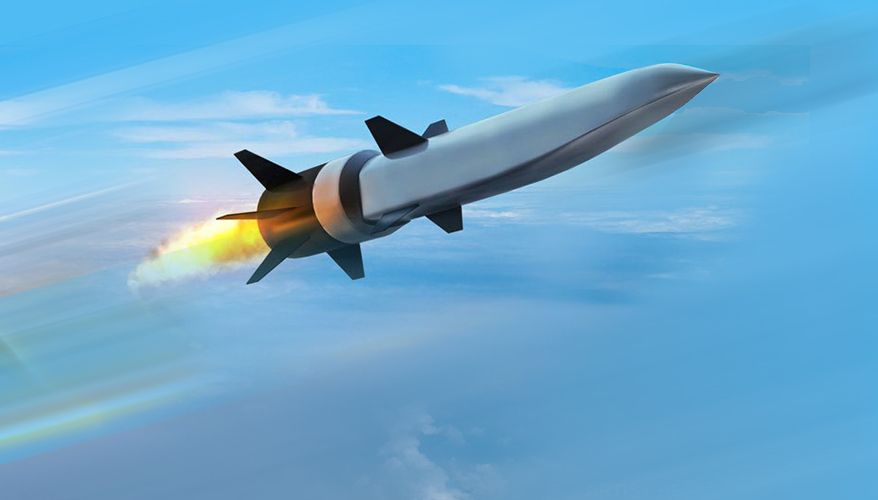he Pentagon will retain strict security protocols to ensure “we’re not training Chinese scientists that are going to go help their programs" said Gillian Bussey, head of the Joint Hypersonic Transition Office
By PAUL MCLEARYon October 26, 2020 at 5:31 PM
Raytheon Hypersonic cruise missile image
WASHINGTON: The Pentagon has kicked off a five-year, $20 million effort led by Texas A&M University to do research on dozens of hypersonic weapons projects to stay ahead of China.
“We are in a bit of a race right now,” with China and Russia on developing the technology, Mark Lewis, acting deputy undersecretary of Defense for research and engineering (and director of defense research and engineering for modernization,) told reporters on a Monday call.
One of the models the DoD has looked at in developing the new consortium is the Chinese government’s, which works closely with its universities on hypersonic weapons programs. Lewis said they have noted that “China will integrate their students working on their various projects.”
Universities in the US, Australia, the UK and Canada are eligible to work on the DoD program, said Gillian Bussey, head of the Joint Hypersonic Transition Office. But Bussey added Texas A&M has strict counterintelligence protocols in place, and the Pentagon will have strict rules for who can participate in the often classified work. The team in particular wants to ensure “we’re not training Chinese scientists that are going to go help their programs for example.”
One hypersonic program that Bussey revealed is already in the works would eventually put a hypersonic cruise missile on a carrier-based F-18.
She said the effort, which is being run by the Air Force Research Lab and has been contracted to Boeing, is developing a dual mode scramjet design. “We’re doing this so that we can have an option for the Navy that is compatible with F-18 based on carriers. We hope to have that testing wrapped up in time to support any decisions that either the Air Force or the Navy will end up making in terms of future hypersonic cruise missile activities.”
Overall, the university project is looking at six overarching technology areas that will be addressed across 26 solicitations her office plans to send out to university teams to work on.
The University Consortium for Applied Hypersonics “allows us to get teams together, in some cases large teams, tackling these really complex major problems. And that’s the beauty of this,” Lewis said. “The university is going to be directly partnered with us. They’re going to be working on actual real world problems, they’re going to be fully integrated” with the DoD.
One of the primary reasons for this sort of approach is that hypersonic weapons are so advanced that university physicists, aerodynamic experts and top engineers at universities are among the few people who can work the problems. Also, universities possess unique test and experiment facilities to work on glide bodies and other hypersonic approaches.
Bussey said her office is planning to issue an initial tranche of 26 projects to the consortium members next month, “and we expect to award $20 million in funding to those proposals that best meet our needs.”

DoD Kicks Off New Hypersonic Program; F-18 To Get Hypersonic Cruise Missile - Breaking Defense
The Pentagon will retain strict security protocols to ensure “we’re not training Chinese scientists that are going to go help their programs" said Gillian Bussey, head of the Joint Hypersonic Transition Office

